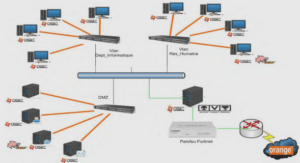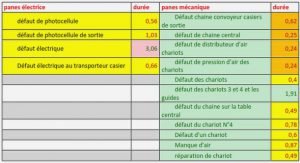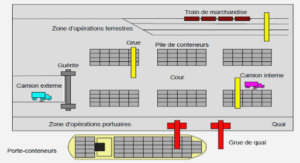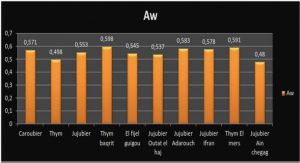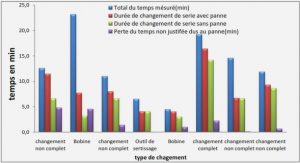Hydrothermal methods
Hydrothermal method is an approach where a solution of different species is poured into a sealed reactor and treated to produce a single crystal. Utilization of the relatively high temperature in the reactor and the high-pressure growth environment promotes the dissolution and recrystallization of poorly soluble or insoluble material. Hydrothermal methods include hydrothermal synthesis, hydrothermal treatment, hydrothermal reactions, etc. During the hydrothermal process, the crystal grows to its largest possible size under the non-restricted conditions and its characteristics (various shapes, high degree of crystallinity, small size, uniform distribution, less particle agglomeration, etc.) form. The development of crystal face and the morphology of the crystal formed by hydrothermal synthesis are closely related to the hydrothermal conditions such as water temperature, pressure and the permittivity, viscosity and diffusion coefficient of the solution, etc. The same type of crystal can be produced with different morphology under different hydrothermal conditions.
Template method
Template synthesis of nanomaterials is a cutting-edge technology developed since 1990s. It is also a very effective nanomaterials synthesis method that has been widely used in recent years. Early in 1999, South Korean scientists Kim et al. took MCM-48 mesoporous silica as template and synthesized three-dimensional cubic mesoporous carbon CMK-1. In the same year, Japanese scientists Moriguchi et al. used a cationic surfactant CTAB as template and synthesized disordered carbon materials by using phenolic resin as carbon source. Template method is not sensitive regarding the preparation conditions, easy to operate and implement, which controls the structure, morphology and particle size of nanomaterials through the template material (template). Template method is often divided into hard and soft template methods. Dong et al. from Fudan University adopted hard template method. Through using mesoporous carbon pellets as a template, they have synthesized a variety of non-silicon-based mesoporous materials such as solid or hollow aluminum oxide, titanium oxide and aluminum phosphate microspheres. Firouzi et al. and Huo et al.from University of California used soft template method to explore a variety of different types of inorganic and organic combinations and proposed the general synthetic route to mesoporous materials.
Morphology is an important parameter for characterization of material properties, especially in the mesoporous material. Morphology, together with particle size, surface area, pore structure determines the property of mesoporous materials, consequently, pinpoints their applications. Among these, mesoporous thin films, as film-like material, have an unparalleled advantage in adsorption and separation compared to the other nanomaterials with different shapes .
Comparison of hard and soft template
Hard template is mainly used for some previously prepared template material, such as AAO template, mesoporous carbon, polymer microsphere and so on. Hard template has high reproducibility and stability, and it is mostly used for synthesis of arrays of nanomaterial. However, the separation of template and production may cause damage to the structure of nanotubes, nanowire or hollow balls.
On the other hand, soft template is mainly based on action of the micelle which form organic-inorganic phase between surfactant, high polymer and biopolymer, and target product. The aggregation by weak intermolecular or intramolecular interaction creates a certain structure of space. Such aggregates have significant structural interface. Soft template is formed during the reaction whereas hard template is prepared before the reaction. Hence, soft template is easier to build and remove than the hard template. It does not require complex equipment and strict production conditions and the reaction can easily be controlled. Soft template is mostly used to produce various size and sharp structure of nanomaterials.
The effect of calcination system on the morphology of alumina
The alumina calcination system is very important for obtaining nanoparticle powder with monodispersity and uniform morphology. Nano Al2O3 powder, which is composed of widely used α-Al2O3, γ-Al2O3 and amorphous Al2O3, is generally obtained from alumina precursor calcined at different temperatures. Therefore, the compaction among alumina particles of high activity is inevitable at high temperature. Thes results in severe particle agglomeration and resintering of individual particles with surrounding ones after melting with a formation of dendritic structure called « neck formation » of particle . The result of the experiments showed that the calcination temperature, holding time and heating rate have a significant effect on the morphology of alumina. While the temperature is less than 800ºC, alumina particles can continue to maintain their original morphology. If the temperature becomes higher than 800ºC, the activity of alumina particles is enhanced, and agglomeration begins to occur. Ceresa et al. first presented the relationship between temperature and phase transformation of alumina during the calcination process.
|
Table des matières
Chapter 1 :Introduction
1.1 Background
1.2 Statement of the Problem
1.3 Objectives
1.4 Originality
1.5 Methodology
1.6 Scope
Chapter 2 :Literature review
2.1 Hydrothermal methods
2.2 Sol-gel method
2.3 Template method
2.3.1 Hard template
2.3.2 Soft template
2.3.3 Comparison of hard and soft template
2.4 The effect of calcination system on the morphology of alumina
2.5 Summary
Chapter 3 :Methodology
3.1 Experimental
3.1.1 Characterization of the wastewater
3.1.2 Treatment of the reagents and improvement of the purity
3.1.3 Preparation of high purity alum solution from the wastewater
3.1.4 Production of 5N (99.999% pure) spherical alumina nanoparticles by single templating
3.1.5 Production of 5N (99.999% pure) spherical mesoporous alumina nanoparticles by double templating
3.1.6 Application of the 5N alumina nanoparticles in different fields
3.1.6.1 Preparation of sapphire crystal
3.1.6.2 Photoacoustic (PA) tomography
3.2 Characterization of alumina samples
Chapter 4 :Preparation of high purity alum solution from the wastewater
4.1 Introduction
4.2 Results & Discussion
4.2.1 Characterization of the wastewater
4.2.2 Treatment of the reagents and improvement of the purity
4.2.3 Purification of H2SO4
4.2.4 Preparation of high purity alum solution from the wastewater
Chapter 5 :Production of 5N (99.999% pure) spherical alumina nanoparticles by single templating
5.1 Introduction
5.2 Production of 5N (99.999% pure) spherical alumina nanoparticles by single templating
5.3 Results
5.3.1 The Effect of Synthesis Conditions on Spherical Alumina Morphology
5.3.2 The Effect of Gum Arabic (GA)/Urea Weight Ratio on Spherical Alumina Morphology
Chapter 6 :Production of 5N (99.999% pure) spherical mesoporous alumina nanoparticles by double templating
6.1 Introduction
6.2 Production of 5N (99.999% pure) spherical mesoporous alumina nanoparticles by double templating
6.3 Results
6.3.1 The effect of synthesis temperature and time on the morphology of spherical mesoporous alumina
6.3.2 The Effect of GA/P123 Weight Ratio on of Spherical Morphology
6.3.3 Spherical Mesoporous Alumina
Chapter 7 :Advanced applications of the 5N alumina nanoparticles in different fields
7.1 Introduction
7.2 Preparation of alumina particles as a precursor for sapphire crystal growth
7.3 Application of Spherical Alumina on Sapphire Growth Using the Heat Exchange Method
7.4 Photoacoustic (PA) tomography
Chapter 8 :Conclusions and Recommendations
8.1 Conclusions
8.2 Recommendations
REFERENCES

